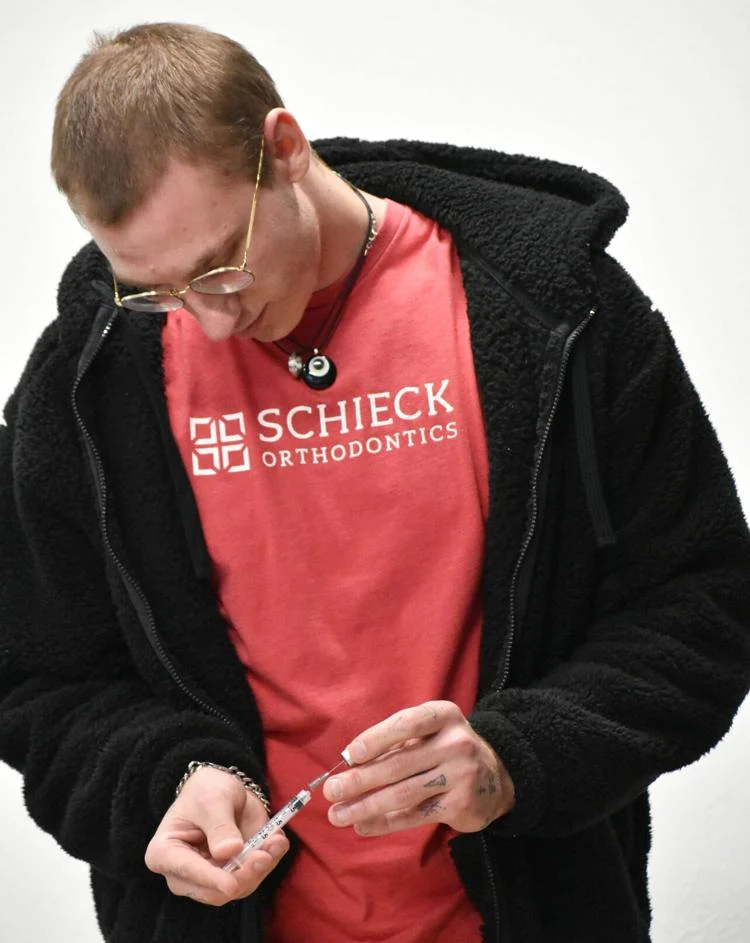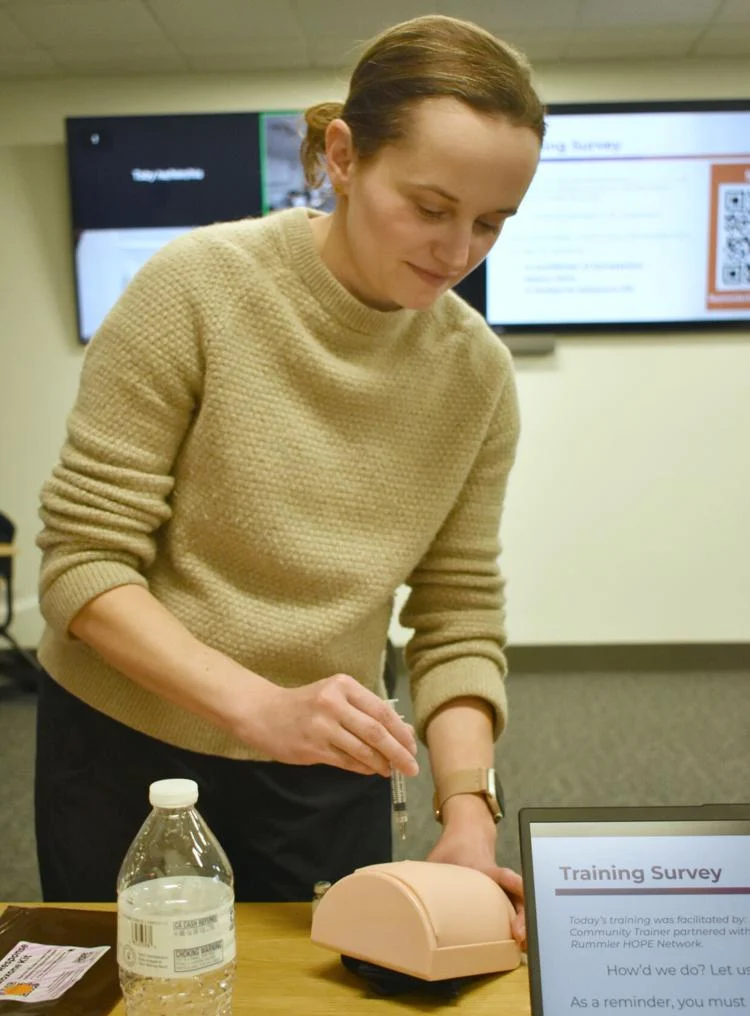Naloxone kits, training offered free by Rice County partners
April 8, 2025
By Colton Kemp for the Northfield News
Northfielder Nikita Geissler hopes to soon be promoted to house manager at A Way Out Sober Living in Northfield.
There was a significant skill he was lacking experience with however — administering naloxone.
Naloxone, often referred to as the brand name “Narcan,” is what’s called an opioid antagonist, binding with the same brain receptors an opioid does. If administered correctly and quickly, the lifesaving drug can reverse or block the effects of an opioid overdose.
“I thought it would be good to come learn more about it, like how to give it to someone,” Geissler said. “I just think that would be a good thing to know if I get the job.”
The Rice County Chemical and Mental Health Coalition is a collaborative group of community partners implementing ways to educate the public on the harms of substance abuse and ways they can avoid the habit altogether.

Wednesday’s demonstration and training saw about a dozen community leaders from various organizations in attendance. Ashley Gardner, of Dundas, is the Healthy Community Initiative Network Impact Coordinator for the coalition.
“We’ve had a few of these already, but we just haven’t been reaching the community like we did today,” she said.
Gardner said the national and statewide efforts to curb overdoses with naloxone education have produced reassuring results lately.
Minnesota saw the first decline in drug overdoses in 2022 for the first time in several years. The U.S. Centers for Disease Control and Prevention released a report in February revealing the country saw an “unprecedented” 24% decline in overdose deaths for the 12 months ending September ‘24.
“That’s reassuring, because it means our efforts are actually working,” Gardner said. “In Rice County, our overdose deaths went up by one last year unfortunately, but we’re making real progress.”

HealthFinders Recovery Care Coordinator Toby Anderson led the training using a slideshow and live demonstrations with a foam tool made to mimic a layer of skin with muscle underneath.
He discussed topics like the origin of the opioid epidemic, the national and local statistics and the Steve Rummler HOPE Network, which provides the materials needed to run the training sessions and naloxone kits to partner organizations across the state.

He also gave detailed instructions and guidance on the different methods of administering naloxone, before inviting the group to practice with the syringe. Attendees left with a free naloxone kit and a sticker that says “I carry naloxone.”
Rice County Neighbors United Executive Director Mar Valdecantos was among those in attendance, and she asked Anderson about the infamous videos of police allegedly overdosing on fentanyl through their skin or by breathing in the powder.
“It makes you wonder, if you’re helping somebody,” she said.
She described a time she saw a suspected overdose at a Walmart, where the police and EMTs reacted as if the substance was “alien.”
“There was a lot of fear out there with, like ‘What if fentanyl is put in the air and things like that?’” Anderson responded. “Typically, you will not overdose from coming into normal contact with fentanyl. If you put a subdermal patch on your skin or if you ingested it somehow, that’s when the danger comes in. But if there’s like fentanyl powder in the room, it’s not going to seep into your system. Some of those videos were overblown for scare tactics.”
Studies have since found that the majority of the reactions from law enforcement following exposure to allegedly lethal doses of the drug are less inconsistent with symptoms of an opioid overdose and more consistent with those of a panic attack.

